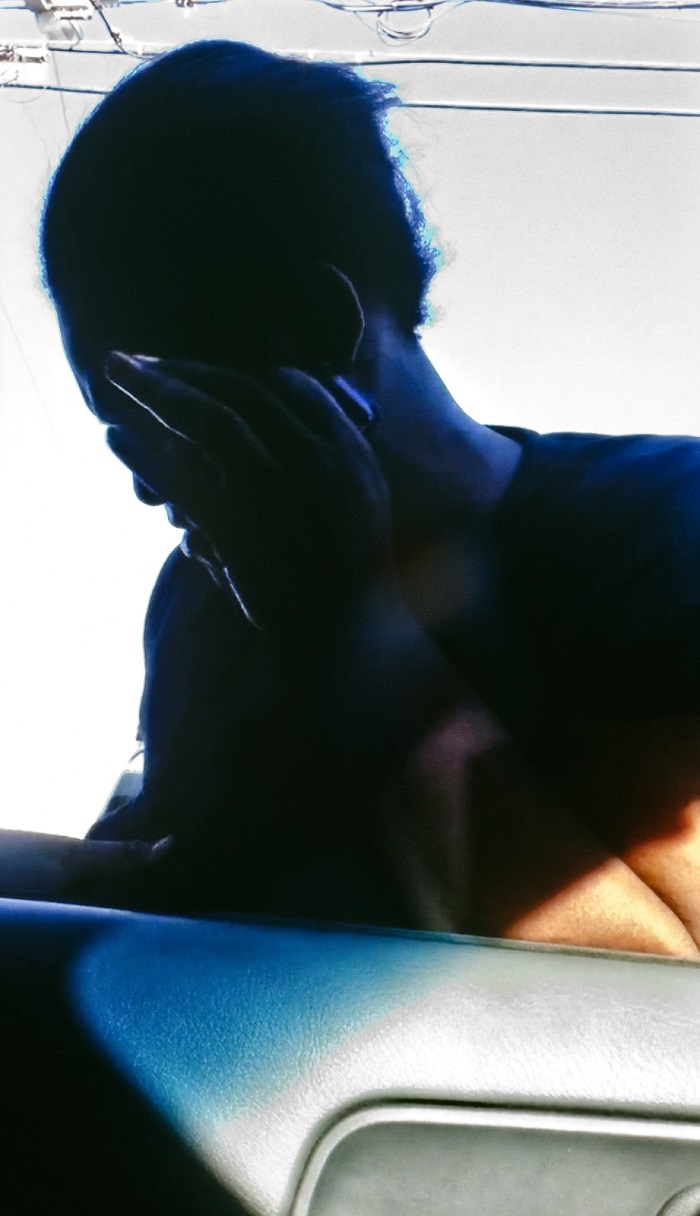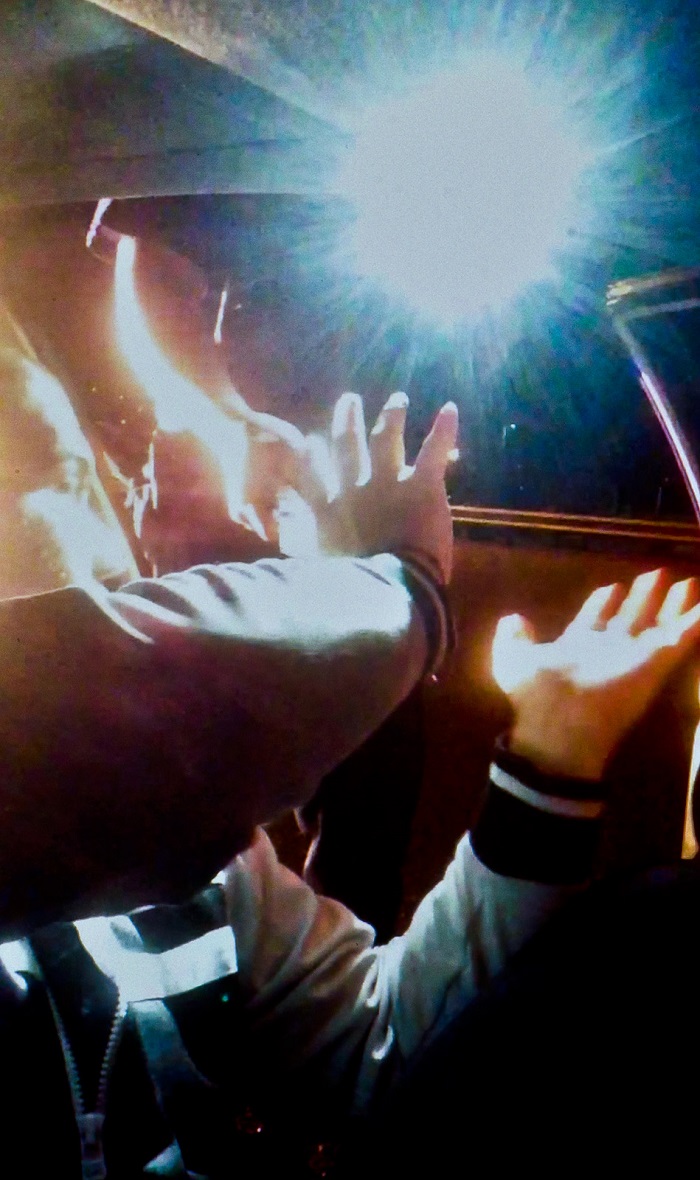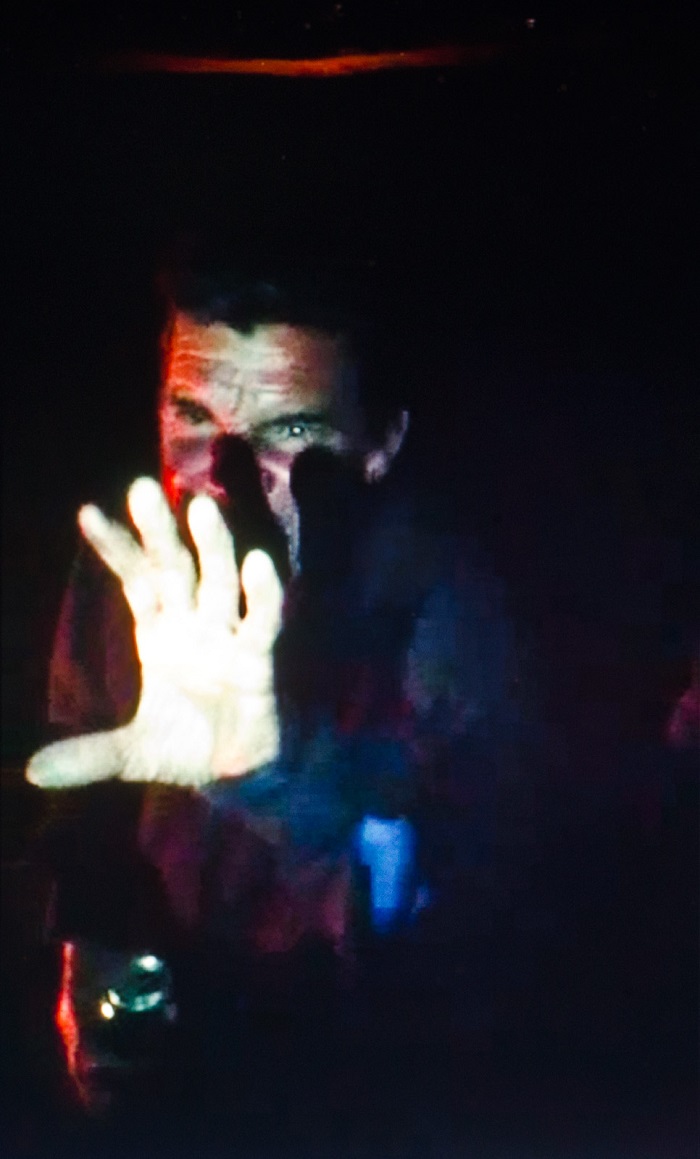Photographer Doug Rickard has spent the last three years immersed in YouTube, watching videos uploaded by Americans using their cellphones. These videos, documenting a dizzying array of activities, from what appear to be criminal or semi-legal acts to comic antics, gave Rickard access to scenarios he otherwise never would have, “hijacking their own device," he writes, "to give me very special views and intimate situations.”
Rickard selected and appropriated specific images by pausing the footage and advancing through it second by second. The resulting volume expands on his previous book, yet offers a darker and more dynamic portrait of America’s urban underbelly, engaging race, politics, technology, surveillance, and our cultural shift toward the ever-present camera.
.jpg)
When I first emailed Doug about the book and an interview, he warned me: “John, it’s a dark book.” Of course, he managed only to intrigue me more. I wrote about his previous book, A New American Picture; there were many reader responses then, and some were quite spirited. Not everyone can agree whether shooting images from Google Earth, and now, appropriating images from other people’s YouTube videos, constitutes art. At least one said his Google Earth images were not documentary photography, that it was no more than “an idea.” Call it what you will, Rickard’s work is unique.
Rickard selected and appropriated specific images by pausing the footage and advancing through it second by second. The resulting volume expands on his previous book, yet offers a darker and more dynamic portrait of America’s urban underbelly, engaging race, politics, technology, surveillance, and our cultural shift toward the ever-present camera.
.jpg)
When I first emailed Doug about the book and an interview, he warned me: “John, it’s a dark book.” Of course, he managed only to intrigue me more. I wrote about his previous book, A New American Picture; there were many reader responses then, and some were quite spirited. Not everyone can agree whether shooting images from Google Earth, and now, appropriating images from other people’s YouTube videos, constitutes art. At least one said his Google Earth images were not documentary photography, that it was no more than “an idea.” Call it what you will, Rickard’s work is unique.
In a world where surveillance is a given, Rickard now invades other people’s videos for things they never really saw. By zooming in on his screen and stopping at the point he finds visually worthy, he presents viewers with something conceptually new. Appropriation is certainly not original. The Shepard Fairey vs. AP case was watched closely by artists and lawyers alike as they grappled with the term “fair use.” Fairey blew his case by destroying evidence, settled, and received two years probation. Let’s not forget the artist Richard Prince, who has been sued in the past for appropriating other people’s copyrighted images. Randy Kennedy wrote about that in 2011 for The New York Times. In fact, Prince has made a career or appropriating other people’s images. Warhol certainly did it, Rauschenberg did, and even Larry Rivers when he used an image from Life magazine for his famous Last Civil War Veteran painting.
.jpg)
John Foster: When I look at this second book, you are right: it is a dark visual commentary about our country. You could have selected YouTube videos of say, people’s birthday parties, summer vacations, or lighter subjects—but you didn’t. You selected smart phone videos of what appear to be gangbangers, ordinary stuff of the streets, people fighting, and car chases. And it looks like most of these were taken at night. You must like this rabbit hole you go down, the underbelly of society?
Doug Rickard: Yes, it’s a take that is very focused and came from very specific keyword searches yet it is dealing with broad topics. I started this project back in 2009, in parallel with the Google Street View project, but ultimately waited on this until after I was done with the other. I explored YouTube then from roughly 2011 to 2013, resulting in N.A. I knew that YouTube would give me very unique angles and situations because of the dynamic of the smart phone camera and the fact that I was a sort of “fly on the wall.” I started by searching at the city name level and then got tighter and tighter. What I saw wasn’t pretty.
I’m interested in the territory of race, class, socio-economics, and also voyeurism, surveillance, technology. This platform presented a frontier from which to explore and also speak. As I started to archive the material and sift through the snippets, pausing and looking for my pictures, I noticed that the nature of social media itself, the stage that it presents, seemed to draw out behavior and create impulses that ran on top of the deeper societal issues. Basically people would look for material that could elicit likes, shares, and comments, and often it was volatile or violent scenarios that would be the result: "hood fights” or “passed out girls,” “sideshows” [street racing], or the act of paying “crackheads” to dance or jump off of a building for a dollar. This terrain yielded mountains of material and related in a way to both society and also technology.
JF: There are a good number of contemporary photographers who explore the dark side of life. Three that come to mind are Joel-Peter Witkin, who is freaky dark. Roger Ballen has gone places most would not, and Eugene Richards has covered some seriously dark documentary subjects in his career. Your work is so different, in my view, because you peer into their world without ever being there. There is a certain detached, voyeuristic feeling I get when viewing the images—like subjective camera technique in cinematography. I think to myself, “I am right there in the middle of this—and they do not know it”—like I am lurking in the shadows.

DR: Yes, we’re entering an era of global voyeurism and surveillance, both willingly and unwillingly. All of us, especially our youth, are diving in no holds barred. We look, we swipe, we like, we peep. There are a billion cameras and everyone has an insatiable appetite to participate. N.A. is detached and yet it is intimate. We are looking at things that are public and yet they are private. We’re a fly on the wall, you and I are riding along in the car and peeping out through the lens as a window. From the NSA on down to all of us as individuals, we are marching toward a new paradigm, one that gives us a billion windows from which to look and then those in our hand and our home from which to be looked at.
JF: Let’s discuss this appropriation of images thing. When I wrote about your last book A New American Picture, we received a few readers that were definitely rankled by what you were doing. They just didn’t get it. How has your thinking evolved since your first book?
DR: We’re entering an era of appropriation—it’s not just a working method, it is becoming a norm. Tumblr, Instagram, Twitter, other platforms yet to emerge are providing tools from which to “remix” the masses of content that are being pushed on to the internet. It’s no surprise then that artists will look at platforms to do their own “speaking.” This has been done historically, it’s simply ratcheting up due to the Internet and an explosion of accessible platform and content. I have my own way of working and it’s accompanied by very distinct visual authorship in spite of the act of commandeering, hijacking, or appropriating existing imagery. I am driven to stitch together an aesthetic that visually connects the material and makes it distinct, as if by a single author, but that is not in itself a requirement of appropriation. It is simply my take. The transformation of appropriated material via re-contextualization, or the application of a specific idea may even be enough.
JF: Finally Doug, you manage two highly popular web sites, American Suburb X and These Americans—always concerning American subject matter. What is it about our country that you are trying to say?
DR: ASX is dealing with photography as a whole, even though “American” is in the name, but you’re right, T.A. is dealing only with American material. I’m obsessed—I’m the son of a megachurch pastor and in spite of a very patriotic world view presented to me, I have a distinctly critical take on much of the American experience, the failure of the American Dream, and the huge viciousness and cruelty of our past (and present) toward people of color. I have to then manifest my obsessions (anger, disdain, and yet also obsession, and even love) into actions and those are in the work that I do and also the websites that I have created. Look at all of it as an extension of my inner workings and where my impulses choose to take me.
Doug Rickard: N.A. is available now from Verlag Kettler/D.A.P.
.jpg)
.jpg)
.jpg)
.jpg)
.jpg)
.jpg)
.jpg)
.jpg)


.jpg)
Images © Doug Rickard; courtesy Yossi Milo Gallery
